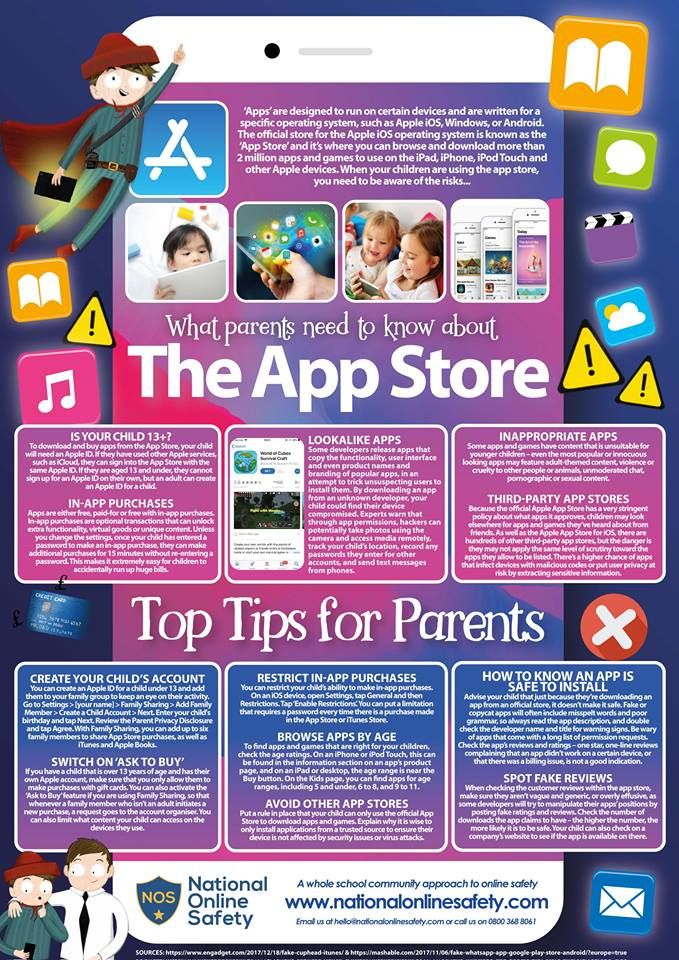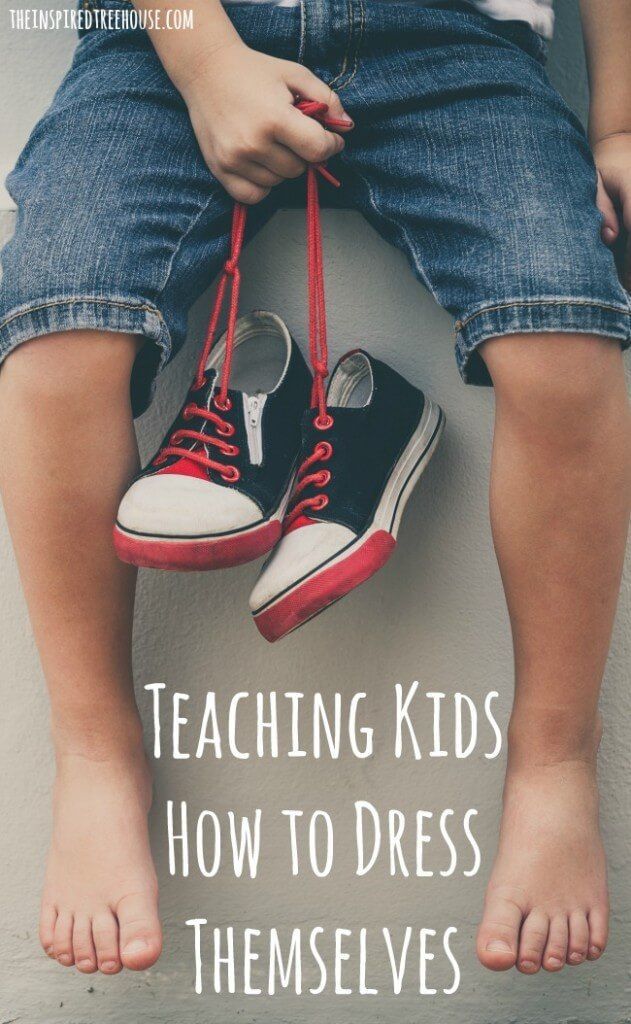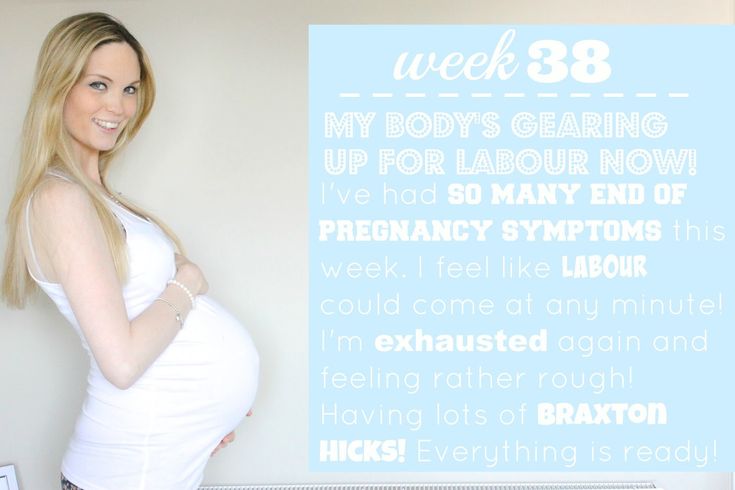Best routine for newborn
A Newborn Routine That Works Every Time
What's in this post...
If you’ve been going around a tired mom like a chicken with your head cut off, here’s a good sample newborn routine for you. I think it’ll go a long way in helping you survive the newborn phase.
Sample Routines:
- Ultimate Newborn Sleep Schedule: Week by Week
- The 3 Month Old Baby Sleep Schedule You Can Count On
- Sample 6 Month Schedule
- 9 to 12 Month Sample Schedule
- 18 Month Sample Schedule
- 2 Year Old Sample Schedule
- Ultimate Newborn Sleep Schedule: Week by Week
I’d like to start off by saying that I feed my baby when he is hungry. I love routine and think they’re great, and we work towards a routine each day.
But even if it’s “off schedule,” I feed my babies when they are hungry. In case you are a troll. Or a routine hater. Or about to send me hate mail.
I just wanted to tell you.
So let’s talk about how to get your newborn on a routine where they feed, “play”, and sleep in set patterns that are beneficial to everyone involved.
Baby, siblings, and adults. Routine is not a dirty word.
In fact, routine brings sanity to an otherwise chaotic home environment.
Some mothers thrive on a spontaneous day, and that’s great for them and their kids, but some mothers need structure to make it through.
And I’m one of those mothers!!
I know some of you are going to think my routine is cuh-ray-zeee.
But all 5 of my kids have had the same newborn routine and I’ve had the same results with all 5.
So I’m not saying it’d work for every baby, and definitely not for every mom, but it has worked for me and mine.
Read These While You’re At It
Sample Newborn RoutineNote: these are approximates, but most days we are very close to each of the times listed.
Your sample newborn schedule might look different, then be tweaked to work for you.
The biggest key is the intervals of feeding and sleeping.
7:30-8:00 am – wake up and feed
8:30 am – down for a nap
10:30 am – feed, change diaper, play (developmental play mat here)
11:10 am – down for a nap
1:00 pm – feed, change diaper, play
1:40 pm – down for a nap
3:30 pm – feed, change diaper, play
4:10 pm – down for a nap
6:00 pm – feed, change diaper, play, bath (we use this for the sink and it is amazing)
6:30 pm – down for a catnap
7:30-8:00 pm – change diaper, put to bed for the night
8:30 pm – feed (cluster feeding even)
10:30-11:00 pm – dream feed swaddled, put back to bed (my favorite swaddle here)
Then when they wake up during the night I feed them, and this is usually every 3 hours or so.
Read: 8 Reasons You’ve Got A Whiny Baby (And How To Fix It!)
Newborn Settling Guide
Tried-and-true *hands on* newborn settling strategies that even the most fussy (or wide-awake-sleep-refusing) newborns cannot resist!
Learn More
I just wanted to thank you for your sample routine. I’ve been using it for a week with my baby and had tremendous success from day 2!
Wind down time is so important and so is consistency. Thank you so much. – Sam Morgan
Read: Cocooning a Newborn & 7 Reasons Why it Can Be Good For The Family
Why so much sleep in your newborn routine?Well, first of all, why not so much sleep? All 5 of mine have taken a nap after every single feeding from newborns until they were over 1.
Of course the schedule changes, but they nap between feedings for the first few months without question unless they’re sick or we’re out.
Most sources will say it’s normal for a newborn to sleep 18+ hours during the first few months and I’ve always found this to be the case.
If your baby fights sleep much I’d say that it’s a case of you keeping them up. If you try feeding them, swaddling, then immediately putting them down to nap to sleep you may see a big change.
I think this pacifier is a lifesaver with this.
Newborn Sample Routine
Grab this sample newborn routine, tweak it, and have calmer more peaceful and predictable newborn days.
- 11 ways to get your baby to sleep well for the long run
- awesome wind-down routines for naps and bedtime
- the sleeping myth that backfires every time
Watch my video below to get information on giving your little one FULL FEEDS and why that matters for their sleep.
Does the family ever get to see the newborn on this routine?In a word: no.
Not really anyway.
My family always jokes, “When are you going to let the baby come out of its room?” and I reply smiling, “In a month or two!” :)
Aside from the germs aspect, babies can be overstimulated very easily.
People who are far removed from the baby world think it’s normal to talk very very loudly and try to wake the baby up to see the color of its eyes.
It’s like… I mean… just… no.
Please stop that.By the time the baby is 3 to 4 months old they are awake more and have a lot more time to “socialize.” Now, do I let family snuggle my sweet newborns when they want?
Sure. If they fall asleep in their arms, do I remove them? Of course not, I’m not cruel. Who doesn’t want to hold a sweet baby?
Still, though, I’m not waking the baby up every time someone stops by.
Ultimately, these first few months set the tone for their sleeping habits and newborns who are used to sleeping become babies who are used to sleeping and babies used to sleeping become toddlers used to sleeping, etc.
A major sleep law: sleep begets sleep.
Newborn Feeding Chart
Use this simple printable chart to track your feeds to make sure baby is fed, your supply is up, and everyone is well.
How do you know when to change the newborn routine?I almost always have to wake up the baby to feed it throughout the day. All four of mine were (and one still is) so sleepy they would either sleep until woken up, or awake at almost the exact time I normally feed them.
I kid you not when I say they will wake within minutes of the normal feeding time.
Their metabolisms are sort of trained to feed and sleep on the routine we make and they wake up happy!
I change schedules when the baby is able to be awake a lot more and is sleeping through the night.
By four or five months when the baby is sleeping 12 hours at night, they are usually awake more during the day and able to cope with more stimulation and play.
That’s when you need to get this swaddle so you can wean one arm at a time.
That’s when I’ll go to 3 hour or 3.5 hour feedings at whatever time seems to suit.
Read: Cluster Feeding Newborns: The Do’s & Don’ts
Baby Sleep Cards & Checklists
These lovely cards and checklists will help you create and keep healthy wind down and sleep routines for your little ones.
Learn More
Tips and things to note:- At night feed swaddled to communicate they should stay asleep and during the day unswaddle to feed which helps wake them up. This swaddle is breathable and you can change them at night without taking their arms out. Here are my best swaddling tips.
- Yawning, tugging ears, staring off into space, and eye rubbing are signs of tiredness, crying is usually a sign of overtiredness. Waiting until they cry to put them to sleep will likely result in a baby who can’t get to sleep on their own
- It’s okay to wake a sleeping baby during the day to feed them, really it is.
 Letting babies sleep long stretches during the day will not help in the day/night confusion issue.
Letting babies sleep long stretches during the day will not help in the day/night confusion issue. - Here’s what to do if baby is feeding every hour and not sleeping.
- Earlier to bed and nap is always best! Wearing them out will backfire. (Here’s why)
- I use white noise during naps and create a dark room. These will help the room be more conductive to sleep.
- If we’re out of the house I won’t attempt to keep the same schedule, but I will try to feed them at the same time as normal or put in an extra feed before I leave so they don’t get hungry while I’m in the checkout line at Wal-Mart.
Read: Want an Easy Baby? Then Use A Foolproof Baby Schedule
The Key to a Good Newborn Routine
This may be so simple it goes without saying… but the key to a good routine is keeping the routine.
It can be tricky to remember everything in order when you’re beginning, but once you get the hang of it, routine will be second nature.
It can seem very difficult to get started doing or keeping a routine when you do not have one at all. Here are some ways you can learn to keep your routine.
Hang it up somewhere.
In my Rhythms, Routines, and Schedules book I have 25+ sample routine printables from babies age 6 weeks to 5 years.
You can take these printables and hang them in your nursery, on the fridge, or keep them in your planner. Whatever works. You can hang the routine cards as well and pretty soon you won’t need to reference anything, it’ll be second nature.
Read: End Baby’s Witching Hour — In 4 Simple Steps
Set some alarms.
While you don’t need to live and die by the clock, setting your phone, watch, or a timer will help you keep aware of routine transitions.
We can often get so wrapped up in what we’re doing we forget we’ve let the baby sleep 4 hours. Why is that bad?
Because 4 hours is a stretch littles ones should only sleep at night! I set alarms on my phone that show on my watch and this works for us.
Read: The Dreamfeed: The Why, The How, & When To Stop
Practice.
As with anything, if you want something to work then work it. Keep pushing what you’ve decided to do. If it doesn’t work then change it up a bit and keep going.
Move forward.
I assure you 100% that a routine will work if you keep at it.
Newborn Sample Routine
Grab this sample newborn routine, tweak it, and have calmer more peaceful and predictable newborn days.
Want Routine Printables to hang up?
If you want routines and schedules for not only the newborn age, but for 3 months, 6 months, 9 months, and on I’ve got great news.
I’ve created a book chock full of routines that work.
Routines that keep babies well rested, happy, and content. Routines that account for all the things you need to do and they are mom tested.
The best part?
The book comes with printable routines (3 choices for each age) that you can hang up and use! So instead of having to reinvent the wheel every few months, you’ll have tried and true mom tested routines right at your fingertips.
Get your own routine book and printables here!
Rhythms, Routines, & Schedules Pack
Easy to implement routines, rhythms and schedules from birth through school-aged kids to help you streamline day-to-day life with kids, including a step-by-step guide for getting started.
Learn More
Newborn Routine FAQ
When do you start tummy time?
You can start tummy time immediately. As soon as you get home from the hospital you can start letting baby spend some time on their stomach each day.
Don’t put baby on their tummies after a feeding or they are likely to spit up. In fact, they’ll probably spit up a bit no matter what, but best to wait until perhaps after baby has woken up from a nap but isn’t quite ready to feed.
You’ll find a good time.
If baby doesn’t like tummy time, simply try again later.
Hello, is this the same schedule you should follow if they are formula fed or should you space out the feedings a little more?
If baby is formula fed you’ll want to go 3 hours between feeds as a general rule instead of 2. 5, Hope that helps!
5, Hope that helps!
Hey Rachel, if you don’t wake them up night, do you let them sleep through night feedings if they don’t wake up on their own?
I usually let mine sleep through any night feedings if they wanted to. I would offer a dream feed and then go to bed and sleep until they woke me up for a feed.
Sometimes it’d be 3 hours, sometimes 4 hours, sometimes 2.5.
I wanted to encourage sleeping through the night so didn’t wake baby up at night to feed past the dream feed.
How do you swaddle a newborn safely at night when it’s hot in the summer?
Family Routines Reboot
Take our 3 day challenge to create life-giving family, child, and self-care routines.
Learn More
You can still swaddle a baby during the summer, follow these summer swaddling guidelines.
Sources:
- The importance of schedules and routines
- Benefits of bedtime routine
- Consistent nature of sleep times related to cognitive development
::
The Ultimate Newborn Sleep Schedule: Week By Week
You’ve come to the right place for your newborn sleep schedule and sleep patterns. I will help teach you how to get your baby on a schedule, how much time in bed is actually needed, and day and nighttime solutions.
I will help teach you how to get your baby on a schedule, how much time in bed is actually needed, and day and nighttime solutions.
Table Of Contents..
- Week 1: What to do right out of the hospital
- Week 2: Fixing the day and night confusion and a 2 week old baby routine
- Week 3: Awake but drowsy and how it affects newborn sleep
- Week 4: How to get your newborn on a schedule
- Week 5: The feed that helps baby sleep longer stretches plus nighttime feeding recommendations
- Week 6: Choosing a morning wake time
- Newborn Sleeping & Feeding FAQ
When I was pregnant with my firstborn… I hadn’t babysat a child more than once or twice.
Much less a baby.
Much less a newborn that was as small as my forearm and was always hungry.
I read what I could, studied what I found, and now – as a mom of 5 – can safely say… getting your newborn to sleep well is totally possible.
I’ll show you how.
The Ultimate Newborn Sleep Schedule: Week By Week
There is some discussion as to whether a baby is a newborn for 28 days or up to 3 months.
For the purposes of my newborn sleep schedule and routine, I’m going to consider 6 weeks the newborn phase as it’s when you’ll do your most intensive cocooning.
Newborn Feeding Chart
Use this simple printable chart to track your feeds to make sure baby is fed, your supply is up, and everyone is well.
WEEK 1
In truth, during the first week there is one goal with regards to newborn sleep… encourage your newborn to take full feeds.
At one week old, of course, the baby doesn’t need to be put on a type of routine yet, but the best thing you can do for a one week old baby routine is to make sure they are taking full feeds.
Right now, at one week, they are learning how to feed, sleep, and be alive! By helping them take full feeds you will know they are full and satisfied.
If they cry, whimper, or have discomfort an hour after a feed, you’ll know they aren’t fussing because they are hungry.
How to keep babies awake long enough to feed:
- Rub their feet and hands
- Wipe their forehead, neck, and face with a wet wipe
- Strip baby down to their diaper and un-swaddle or wrap them so they are not too warm and snug (Psst… here are beautiful nap and bedtime routine cards for your nursery)
- Burp thoroughly when you change nursing sides, or halfway through with the bottle
- Before a feeding, put your newborn on the ground for a little tummy time while you prepare to feed them, they’ll kick around and wake themselves up a bit
When you begin nursing, encourage your baby to take a full feed. This will vary depending on the baby, but it will not be 5 minutes, then falling asleep.
If your baby falls asleep after only a few minutes, gently rouse them and encourage them to continue feeding.
If you can get your baby to take full feeds for the first week they’ll naturally rest well, both day and night.
I know it can be super hard for you to get through this (emotionally and mentally), but you will get through it. You’ll likely do some contact napping during this period as well, which is precious and sweet in this early phase.
There’s a tendency to just let baby feed for a few minutes here and there and sleep here and there. This feels natural, but if you are a first time mom particularly it’s very hard to begin to understand baby’s cues.
Why?
Because baby seems to be fussing a lot and then falling asleep a lot and you don’t know when they’re tired or when they’re hungry. THIS IS WHY routines (even loose ones) are so beneficial to baby and mom.
Baby doesn’t need to cry to make their needs known if they are just well fed and well slept from the get go.
Sample One Week Schedule:
- 7:00 am – full feed, burp, diaper change, wake up and play time
- 8:10 am – wind down routine, down for nap
- 9:30 am – baby wakes up, full feed, diaper change
- 10:45 am – wind down, down for nap
- 12:00 pm – baby wakes up, full feed, “play time”
- 1:30 pm – wind down, down for nap
- 3:00 pm – baby wakes up, full feed, “play time”, bath time, family time, etc.

- 4:15 pm – wind down, down for nap
- 5:30 pm – baby wakes up, full feed, sits with family for dinner in infant seat or mom’s lap, family time
- 7:30 pm – cluster feed (tips on that here), wind down, down for nap
- 9:30 pm to 10:30 pm – dream feed (how to do that and when) (swaddled, of course), immediately back down to bed
- Night feeds throughout the night as baby wakes up
Read These While You’re At It
WEEK 2
By now you are probably well and truly exhausted. And, if your baby has their days and nights all turned around, even more so.
Maybe you’ve even fallen prey to the biggest baby sleep myth I can think of. That of – keeping baby awake so they are tired and will sleep more. This is not the case.
While newborns do have a strong homeostatic drive (a drive to go to sleep), they will have a hard time falling asleep and staying asleep if they are overtired.
They’ll get into the dreaded overtired cycle which is when they’re too tired to eat well and too hungry to sleep well.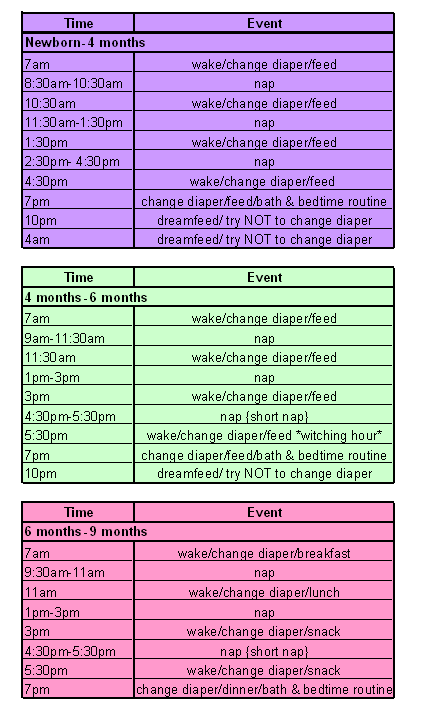
With your 2 week old baby, if you keep working on giving baby full consistent feeds (probably every 2 to 3 hours), you can also begin working on their day/night confusion.
Sounds scary?
It doesn’t have to be!
Nap Times Cheat Sheet
Learn how to space naps, how many a day per age, best times, etc. and get your nap game ON!
How to clear up day and night confusion:
- During the day when baby is awake and feeding, open windows, turn on lights, and keep things very bright
- At night, 8:00 pm and later, do all feeding, hugging, cuddling, diaper changing, in very dim or dark conditions
- After feeding your baby during the day, attempt to keep them awake for at least a few minutes by singing, cooing, playing, and bonding
- If your baby seems fully awake in the middle of the night, try turning on very bright lights which will cause baby to shut their eyes (I’ve heard good things about this trick)
- Don’t allow more time than 3 hours between feedings during the day, even if they are still sleeping.
 Wake them up and feed them again if they continue sleeping. You don’t want a 5 hour stretch to happen during the day, you want it to happen at night
Wake them up and feed them again if they continue sleeping. You don’t want a 5 hour stretch to happen during the day, you want it to happen at night - At night, feed them whenever they wake up and are hungry, but let them determine how frequent that is
- At night, avoid stimulating, playing, cooing, singing, or any other behaviors that will encourage baby to stay awake
- Work on your swaddling with these helpful tips.
At this point your baby is getting the hang of the outside world and you are getting the hang of this period.
Newborn Settling Guide
Tried-and-true *hands on* newborn settling strategies that even the most fussy (or wide-awake-sleep-refusing) newborns cannot resist!
Learn More
Pro Tip
If baby is napping quite long stretches during the day, then saving his fussiness for night…. this could be day/night confusion.
I have had a few babies who would sleep well all day for naps and then would have a two hour stretch at night where they were fussy and not able to be consoled.
This was day night confusion.
I kept on having the baby take shorter naps during the day and making sure they saw lots of sunlight, etc. and within a few days the day night confusion had sorted itself out.
Continue feeding your baby full feeds as you look forward to the next week or two when a more routine day can be expected for both you and baby.
WEEK 3 of the Newborn Sleep Schedule
Now that your baby is about 3 weeks old and is getting the hang of full feeds and has their days and nights mostly fixed, it’s time to start thinking about teaching your baby to fall asleep on their own.
Why worry about this so early?
Here’s why… because they are probably already doing it at this point and their drive to sleep is still strong.
2 and 3 week old babies often go to sleep on their own without much fuss, and if you want that to continue then now is the time to start good habits. Some babies won’t fall asleep in the bassinet, but you can help achieve this without much fuss.
Some babies won’t fall asleep in the bassinet, but you can help achieve this without much fuss.
As babies get bigger they’ll stop this and that’s when you get in a pickle. Moms find themselves victim of the nap trap with no end in sight.
Having to jump through hoops and use newfangled vibrating equipment, washing machines, and cars to get baby to sleep.
Baby Sleep Cards & Checklists
These lovely cards and checklists will help you create and keep healthy wind down and sleep routines for your little ones.
Learn More
A note on sleep patterns and cycles
Within the first 6 weeks after birth, babies typically take a nap between their 2 or 3 hourly feeds.
For the first three weeks of a baby’s life, they are relying on maternal melatonin to help them prepare for sleep and their drive to sleep (homeostatic) is strong.
Sleep cycles typically last about 45 minutes to an hour for newborns.
0-10 minutes they start to fall asleep, 10 to 20 minutes they are getting into deeper sleep.
20 to 30 minutes they are heavily asleep, 30 to 40 minutes they are coming out of heavy sleep, and 40 to 50 or 60 minutes they are in light sleep and easy to wake up.
This is why if you help baby to sleep by patting or shushing, but only do it for 5 minutes, baby wakes up or cries.
It’s because they are not yet in deep sleep.
@amotherfarfromhome Are you doing this right? #babymommas #momminghard #babysleepconsultant #babysleepingtips #momlifeproblems #sahmof5 #sahmoms #stayathomemommylife #athomemom #athomemoms #youngmomproblems #momofbaby ♬ FEEL THE GROOVE – Queens Road, Fabian Graetz
How to get your newborn to go to sleep on their own:
- Do not let your little one get overtired (more on that here)
- Learn the fine art of putting your baby to sleep awake but drowsy.
 This means before your baby has fully conked out, but while they are yawning, doing the “eye roll” or rubbing their eyes, you can set them in their crib to do the final hard work of falling asleep on their own
This means before your baby has fully conked out, but while they are yawning, doing the “eye roll” or rubbing their eyes, you can set them in their crib to do the final hard work of falling asleep on their own - Give the baby a pacifier. This is one of the best ways to help your baby learn to calm down on their own. The pacifier also becomes a positive sleep association (here’s what sleep associations are and do) and gives your baby a way to soothe themselves into sleep. This is my preferred pacifier because it rarely falls off and by 3 months babies can hold it themselves.
Sleep Little Lamb
Create sustainable sleep habits for your little lamb so the whole family can sleep peacefully without the stress, drama, and tears.
Learn More
- Perfect your naptime or bedtime routine (effective quieting routines can be found here) as another positive sleep association. Songs, rocking, hugging, and patting are great ways to help baby calm down.
 Diaper change, lights down low (even in daytime), and white noise communicate “sleepy time.”
Diaper change, lights down low (even in daytime), and white noise communicate “sleepy time.” - When baby is well fed, changed, and not overtired, simply put the baby in their own crib while they are drowsy and let them learn to fall asleep on their own. They will likely stare off into space for a time, if not fall right to sleep. This is okay. This is right!
- In the meantime, you can even help them to sleep in and take longer naps.
Next, we’ll talk about finding and crafting a good routine for a baby that meets all their needs in a timely way that encourages full bellies and rested babies.
Newborn Sleep Schedule SUMMARY
Download and keep this handy to make sure you are prepared for the weeks to come.
WEEK 4 the of Newborn Sleep Schedule
Now that both you and baby are good and used to one another, it’s time to find a mutually beneficial routine and get your newborn on a schedule.
A routine that serves the needs of your infant for nourishment, sleep, and lots of mommy bonding.
As well as a routine that allows mom to take care of herself, meet the needs of other children, and maintain a working and functioning home without compartmentalizing your life.
How to find a good rhythm, routine, or schedule:
- Determine the average time between feeds. If your baby usually goes between 2.5 to 3 hours between feeds, create a routine based on those times.
- Start your day at a consistent time. Choose a time each morning (say, 7 a.m.) and feed the baby every single day at that time. Soon your baby will sleep until 7 and that’ll be your normal start to the day.
- Write down a feasible schedule that allows 2.5 to 3 hours between feedings with nap times in between each feed. See my sample newborn routine with all its times here.
- Make sure general feeding times don’t coincide with other major activities you can’t change like car pickup, dinner time, or the bedtime routine of older children. Of course, you’ll have to be flexible, but take these times into consideration and attempt to feed before or after those events.

- Cluster feed during the late afternoon early evening, more on that here.
- Get the baby sleep routine cards, the baby sleep checklists, AND all 25+ routines for babies aged 6 weeks to 5 years right here.
- Make sure to wake baby up to maintain your routine during the day. Don’t let baby sleep for 4 hours during the day because, inevitably, she’ll need to feed twice during that period at night to make up for it. At night, let the baby sleep as long as they are able between feeds. You determine day, they determine night.
If you still have questions about how to craft a routine, here are my routine archives full of practical tips age by age.
The joy of a routine…
The joy of a routine cannot be understated.
And the main reason routines “fail” is because the mother just doesn’t like them and doesn’t follow through.
Babies, on the other hand, love them.
If you keep a good rhythm or routine then you’ll quickly (within weeks or less) learn to decipher hunger cries from tired cries from gas and pain cries. I’m serious. Routine helps you say… “Hmm, baby fed 45 minutes ago so it isn’t hunger (if you did full feeds!) so must be gas.”
I’m serious. Routine helps you say… “Hmm, baby fed 45 minutes ago so it isn’t hunger (if you did full feeds!) so must be gas.”
Then you burp and VOILA. Baby is comfortable again. Or, baby wakes up crying and you look at your watch and see.. “Oh, it’s been 3 hours… baby is ready for a feed!”
If you do no routine and just feed for 4 minutes all day long you never know what baby actually wanted.
Sample 4 Week Old Baby Sleep Schedule
- 4:30 am – feed baby swaddled (no lights on), put immediately back down to sleep
- 7:00 am – wake up, feed unswaddled (here’s why) in well lit area, play time
- 8:15 am – wind down routine, down for nap awake but drowsy (first nap of the day is the most important!)
- 10:00 am – wake up, full feed unswaddled, play/bathe/errands/ tummy time
- 12:45 pm – wind down routine, down for nap
- 2:45 to 3:00 pm – wake up, full feed, play/family time
- 4:15 pm – down for nap
- 5:30 pm – cluster feed, bath/family time / sit with family at dinner
- 6:30 pm – cat nap
- 7:00 pm – get baby up, wind down routine
- 7:30 pm – cluster feed (what that is, here) swaddled then immediately down for nap
- 9:30 pm to 10:00 pm – feed again swaddled, put immediately down to sleep
- Feed at night as baby wakes up
WEEK 5 of Newborn Sleep Schedule
The dream feed is one of the most important feeds of the day. Or night, rather.
Why?
Because it’s what will help baby get a longer stretch of sleep through the middle of the night and it’s what’ll help you do the same!
A dream feed is essentially a feeding you give the baby between 10:00 pm and 11:00 pm or so, right before you go to sleep.
It helps “top the baby off” so to speak and will hopefully allow you both an extra hour or two of uninterrupted sleep.
This feed is important because it works to fill the baby’s tummy during early evening hours so they learn to sleep long stretches.
It is also the last feed you’ll likely drop.
When you have only one nighttime feed left (and your baby is sleeping until your desired morning time) this will be that feed.
28 Things To Do If Baby Won’t Sleep CHECKLIST
Here’s a handy dandy list of 28 things to try so baby will stop fighting sleep and sleep longer and later.
Dream feed Basics:
- Baby will not likely wake for this feed since they’ll have had a couple of feeds just a few hours earlier in the night.
This means you will wake the baby, likely right before you go to sleep, and feed her.
- Babies can be historically sleepy at this feed and not drink very much. When you wake baby, do a diaper change, re-swaddle, and try to feed the baby as much as they’ll take. If they nod off after a few minutes, use a wet wipe to wake them up and get them drinking again.
- If your baby won’t wake up, wait 20 minutes and try again.
- Feed in a dim or dark room so baby does not associate this feed with stimulation, but simply feeds half asleep then goes back down in their crib fast asleep. These are part of a basic calming quieting wind down routine.
- This feed will be maintained until baby is sleeping fully through the night until morning. And I don’t mean 5:00 am. I mean 6:00 am or later. You’ll drop early morning feeds and be left with the dreamfeed. When you feel confident your baby can sleep through the entire night without milk, then you drop this feed.
This feed may be tricky to get the hang of since baby is so drowsy, but it’s worth its weight in milk.
Erm, gold!
- White noise machine
- Swaddle that allows diaper changes without unswaddling
- Pacifier to help baby settle between feeds and at rest times
WEEK 6 of Newborn Sleep Schedule
Morning wake times.
This is one of the most important habits you can start with your 6 week old baby. Why decide a morning wake time?
Well… it’s simple.
If you feed them at a consistent time each morning, that’s the time they learn to sleep until.
So, if you feed your baby at 5:30 am and then start the day… their metabolisms and body clocks will get used to waking up for good at 5:30 am.
You probably want to avoid this.
How to choose a morning wake time:
- Choose a time that is suitable to your family routine and consistently feed them at this time.
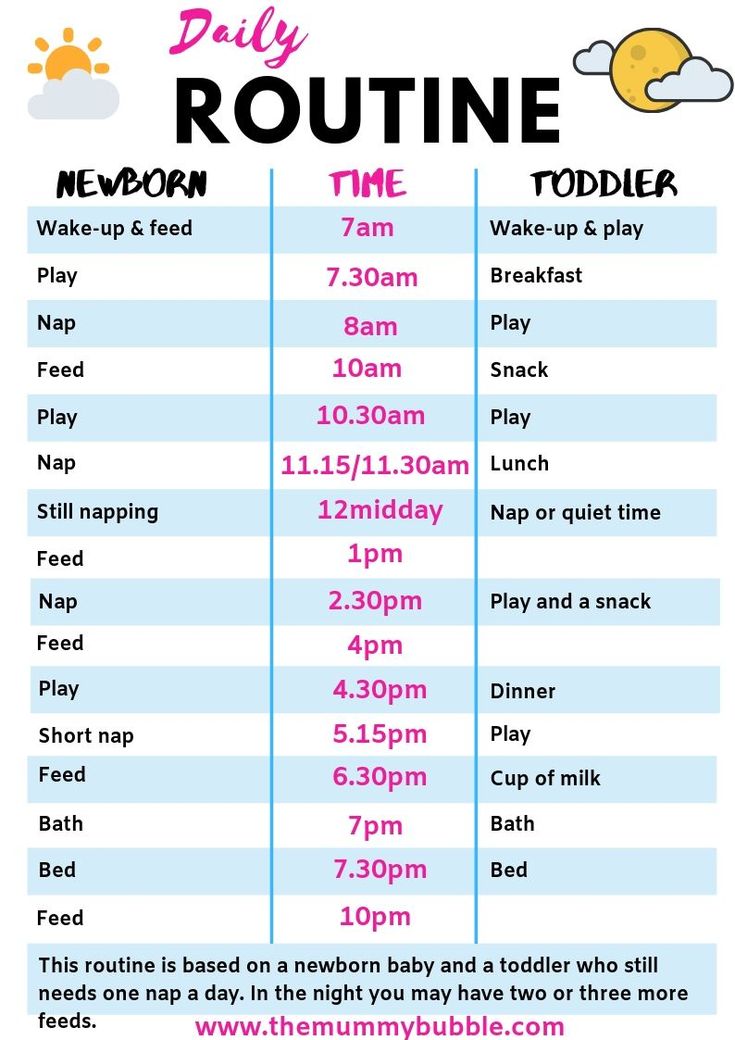
- Every morning, aim to feed your baby at this time even if they’ve fed as soon a 1.5 hours before.
- If need be, gently rouse your baby up around 4 or 4:30 am and feed them as full a feeding as they will take, then wake them up again at the time you’ve determined is their “morning wake time.”
- And, if they wake earlier than this time but are not crying for milk, cuddle, hold, play with, and rock baby until that time comes. If the baby is extremely hungry, feed baby of course. Try to get a full feed in there and then get back on routine throughout the day.
- Remember consistency is key. Your baby’s body will get used to eating at a certain time and will slowly but surely start sleeping a lot closer to that time.
At this point your baby takes full feeds, has a good routine, is learning to put himself to sleep, and has established dream feeds and morning wake times.
You are nearly there! You are a newborn sleep pro!
If you are going back to work at this point, you may want to teach your baby to sleep well at someone else’s house.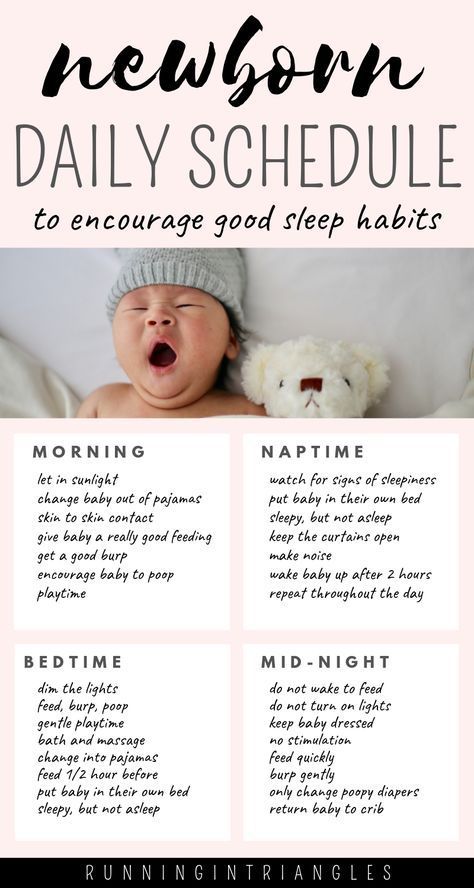
Sleep Little Lamb
Create sustainable sleep habits for your little lamb so the whole family can sleep peacefully without the stress, drama, and tears.
Learn More
Reasons newborn babies cry
- They are hungry and need to feed (make sure you are offering full feeds, otherwise baby will snack and you’ll find it difficult to differentiate a hunger cry from another cry)
- They are tired and need to nap. Essentially newborns nap between each feeding. If baby has been up more than 1.5 hours then they are tired, and likely overtired.
- They are physically uncomfortable. Baby may have a wet diaper, dirty diaper or be too hot or cold. Generally, newborns need about one more layer than we do!
- They have reflux and it’s uncomfortable. You will see your pediatrician, of course, for this, then use the information here to keep baby as comfortable as possible until they outgrow this.

- They have colic and/or are letting off steam. Newborns don’t usually develop colic until around 6 weeks or so, but some crying is normal with newborns. It’s the only way they can communicate. Our job is not to stop their crying as quickly as humanly possible, but to learn to decipher their cries so we can meet their needs appropriately and promptly.
- They are whiny for one of these 8 reasons.
View this post on Instagram
A post shared by Rachel Norman (@momfarfromhome)
Newborn Sleep Schedule SUMMARY
Download and keep this handy to make sure you are prepared for the weeks to come.
Sources:
- American Academy of Pediatrics Sleep Guidelines
- Newborn Sleep Patterns
- How Often To Breastfeed
::
child development from 0 to 1 month
03/01/2019
19
The long-awaited day has come and we finally arrived home with the baby from the maternity hospital.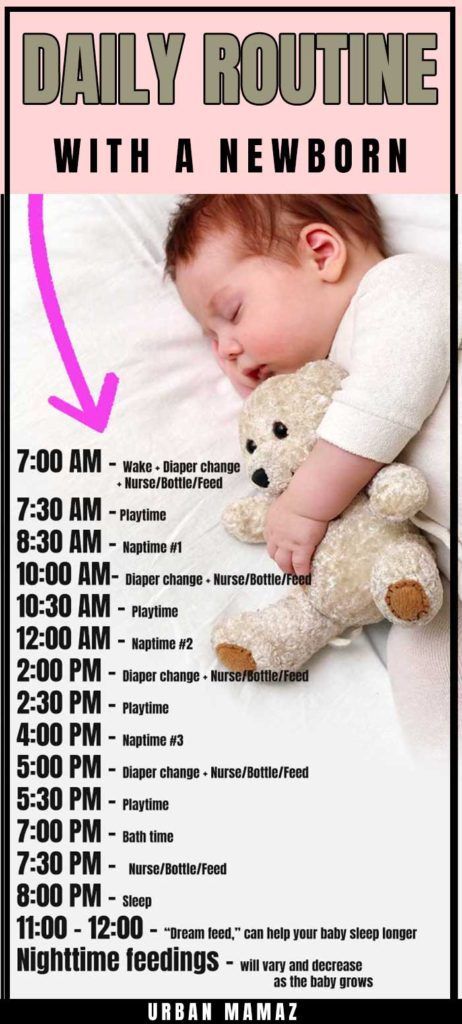 And now, in place of the hospital calmness, where everything seemed so clear, a wave of emotions swept over me. When and how often should I put him to bed? How to combine sleep and feeding from the first days? Should a child have a regime or should not organize a clear schedule?
And now, in place of the hospital calmness, where everything seemed so clear, a wave of emotions swept over me. When and how often should I put him to bed? How to combine sleep and feeding from the first days? Should a child have a regime or should not organize a clear schedule?
All the knowledge was in theory, but it was not easy to put it into practice. Therefore, I share recommendations that it is good for a young mother to know in order to survive such a difficult first month!
Baby's routine
Before we talk about baby's daily routine, it's useful to remember a few facts about sleep in babies this age: Yes, all children are different - some sleep more, others less. But in general, babies need to sleep about 16-18 hours a day.
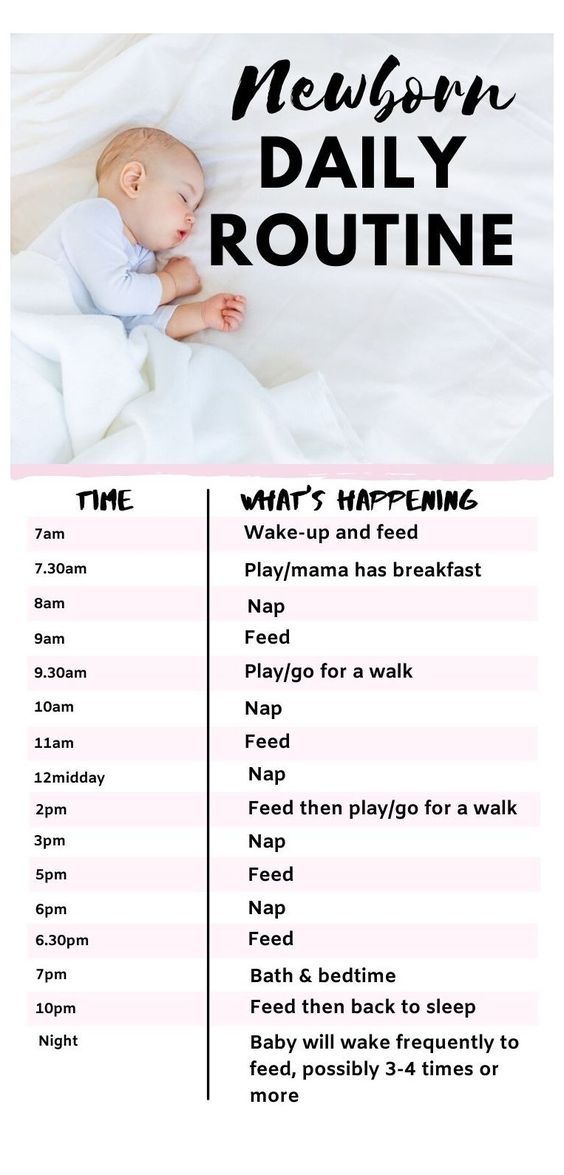 Therefore, all actions to organize the child's day regimen will be directed to this.
Therefore, all actions to organize the child's day regimen will be directed to this. Given these facts, we can say that it is difficult to create a clear day schedule of 1 month.
Daytime sleep
Daytime dreams will not differ from nighttime. During the day, a newborn baby can sleep both 3-4 hours and 20-40 minutes in one dream.
The longest sleep period can be in a day.
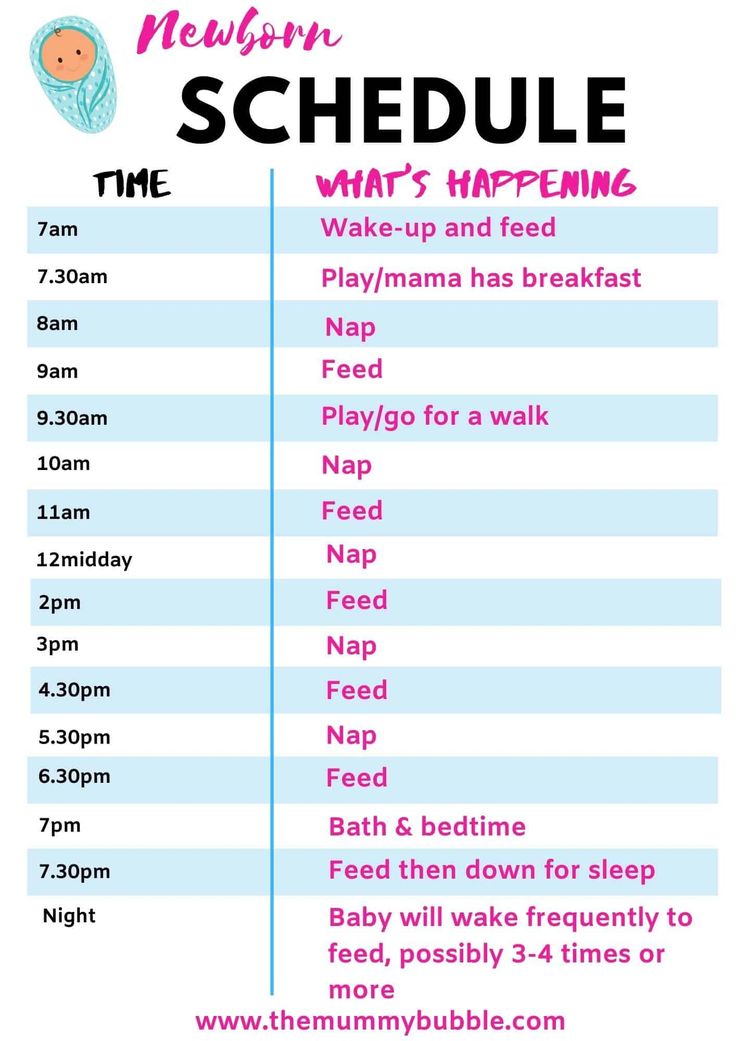
How do you know when a baby wants to sleep again? Focus on signs of fatigue in a child: if he rubs his eyes, looks at one point, sucks his thumb, then it's time for him to sleep. It is also recommended not to exceed the awake time for more than 50-60 minutes if the previous sleep was more than an hour. If the sleep was less than an hour, the period of activity of the crumbs will be the same amount of time. Overworking the child leads to long bedtimes, restless sleep at night and an incomprehensible daily routine.
Night sleep
Sleep can be about 7-10 hours at night. The baby will wake up for feeding. If in the evening your baby began to cry non-stop for several hours, it may be colic. The period of colic lasts up to 6-8 weeks. After feeding, hold the baby upright - this will help his digestion, do a light massage of the tummy.
If you suspect that crying is not related to colic, be sure to contact your doctor.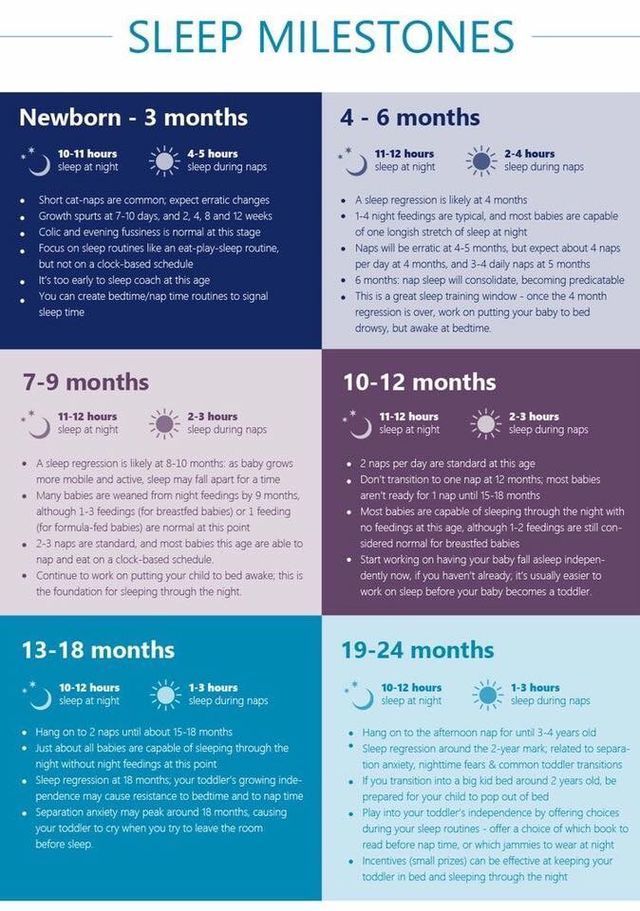 If you are formula feeding, talk to your pediatrician - it may be that changing infant formula will improve the baby's condition.
If you are formula feeding, talk to your pediatrician - it may be that changing infant formula will improve the baby's condition.
Confusion of day and night
Until 6-8 weeks of age, babies may confuse day and night due to an unformed biological clock.
Take your baby out to bright light during the day and dim the lights at home in the evening. Use a night light with a warm, low light at night during feedings and diaper changes.
How to make it clear to a child of 1 month of age that it is time to start the day or go to bed?
Rituals will come to the rescue - daily repeated actions after waking up or going to bed. In the morning it can be hygiene procedures, and in the evening - bathing, quiet games, swaddling and a lullaby.
Baby bed
For the prevention of SIDS (Sudden Infant Death Syndrome), certain rules are followed when organizing a baby bed.
-
Always place your newborn on their back.
 This is the safest position for a baby right now.
This is the safest position for a baby right now. -
Avoid overheating the baby - it is more dangerous for him than the cold. Therefore, pay attention to the temperature in the room: it should not exceed 21-23 degrees in winter and 25 degrees in summer.
-
The child needs to sleep on a flat, firm surface, without blankets, pillows, bumpers, toys or other things.
-
A separate nursery is not needed for up to six months, and sometimes up to a year - a crib in the parents' room is an ideal option for a child to relax. You can remove one wall of the crib and attach it to the bed of the parents. So the baby will be as close as possible to mom at night, but at the same time on a separate surface.
Tips to help your newborn sleep
Feeding your newborn
Feeding on demand is considered to be the best way to manage your newborn's diet.
In the early days, breastfeed as often as possible. This stimulates milk production. We feed from 15 to 90 minutes. Prolonged feeding allows a newborn baby not only to satisfy hunger, but also to survive the stress after childbirth and get used to the new world. After the baby is likely to fall asleep. Night feedings are equally important for both the baby and the mother. They will mostly occur every 3-4 hours.
To improve lactation, also try to feed in the early hours of the night.
If a breastfed baby is eating well and gaining weight, he does not need additional food and fluids until 4-6 months of age.
Walking
An important part of the daily routine of a newborn this month. Walking outside helps set your baby's biological clock and improves sleep. You can walk with a healthy and full-term baby starting from the 10th day of life. Increase the time of outdoor walks gradually until the child is 1 year old, starting from 10 minutes in winter and 20 minutes in summer.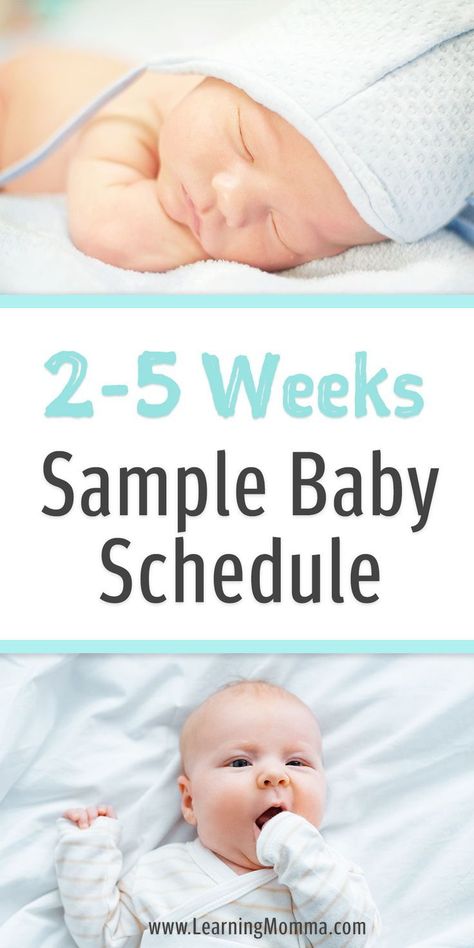
As you can see, in the first month the child's regimen is reduced to establishing a certain sequence of actions: sleep-wakefulness-feeding-games/walk, and there is no clear timetable yet.
Tell us, did you manage to organize sleep and feeding in the first weeks of your baby's life? What were the difficulties?
Like this article? Rate:
Votes: 291
Daily routine for a child under 1 year old
Daily routine is a system for distributing periods of sleep and wakefulness, meals, hygiene and health procedures, activities and independent human activities throughout the day.
Compliance with a rational daily routine corresponding to the age characteristics of the child contributes to his healthy growth and development.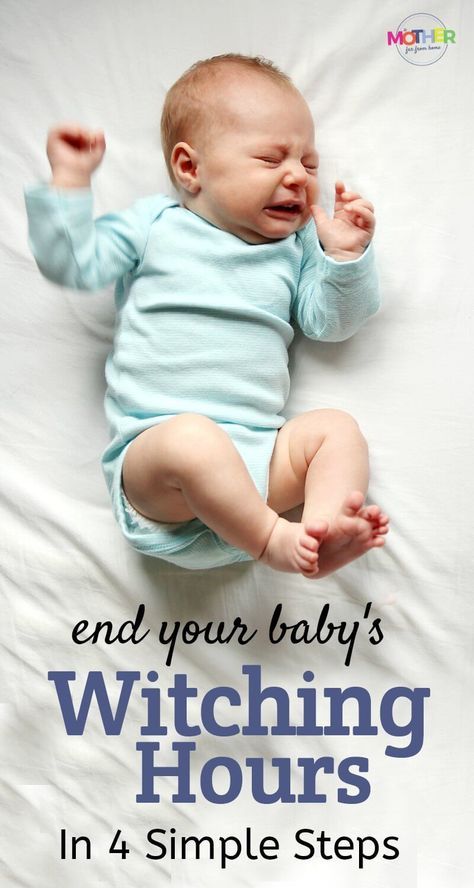 Getting used to performing various types of activities at the same time, the child is prepared for the upcoming type of activity at every moment of time, which ensures their easier and faster implementation. Compliance with the correct daily routine provides a good mood for the child and maintains a keen interest in the study of the world around him, contributing to his normal motor and psychoverbal development.
Getting used to performing various types of activities at the same time, the child is prepared for the upcoming type of activity at every moment of time, which ensures their easier and faster implementation. Compliance with the correct daily routine provides a good mood for the child and maintains a keen interest in the study of the world around him, contributing to his normal motor and psychoverbal development.
The child's daily routine includes the following obligatory elements: diet, time spent outdoors during the day, frequency and duration of sleep, mandatory classes to develop skills in accordance with age, free time.
In the first months after birth, a healthy newborn baby sleeps for most of the day, since all external stimuli are very strong for the nervous system of a child, accustomed to a cozy intrauterine environment, and cause its rapid exhaustion. As the child grows older, the duration of sleep gradually decreases and the time of wakefulness increases.
| Age | Daytime sleep mode | Night sleep | Wake mode |
| Birth to 2 months | 6 x 2.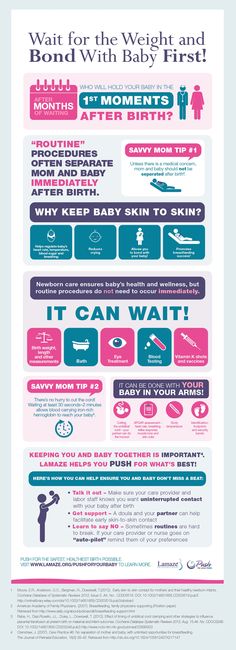 5 hours 5 hours | 6 hours | During feeding |
| 2-4 months | 5 times 2-2.5 hours | 6.5 hours | 4 x 1.5 hours |
| 4-6 months | 4-5 times for 2 hours | 7 hours | 4 times 2 hours |
| 6-9 months | 3-4 times for 1.5-2 hours | 8 hours | 4 x 2.5 hours |
| 9-12 months | 2 x 1.5-2 hours | 9-10 hours | 4 times 3-4 hours |
Closely related to the sleep-wake mode is the feeding mode of the baby. The sleep of a child in the first months of life is very sensitive and is easily disturbed under the influence of various extraneous stimuli, including hunger.
| Age | Mode | Example |
| Birth to 2 months | 7-8 times, every 3 hours | 6,9,12,15,18,21,24 (no night feeding) |
| 2 to 6 months | 6-7 times, every 3. 5 hours 5 hours | 6, 9.30, 13, 16.30, 20, 23.30 (without night feeding) 6, 9.30, 13, 16.30, 20, 23.30, 03 (with night feeding) |
| From 7-12 months | 5 times, every 4 hours | 6,10,14,18,22 |
The child's stay in the open air is essential in the daily routine. The total duration of stay in the open air for children under 1 year of age should be at least 5-6 hours a day. Fresh air has a calming effect on the baby, improves metabolic processes, and increases the body's defenses. In the summer, all games and activities should be held outdoors; in the cold and transitional seasons, two one-time walks of 1.5-2 hours are provided.
Fresh air also has a beneficial effect on sleep. By acting on the skin and mucous membranes of the nose and upper respiratory tract, it provides a faster fall asleep of the child and a higher quality of sleep. Sleeping outside can replace a walk, especially during the cold season.
